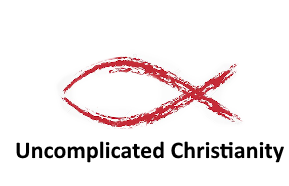The Sinner’s Prayer: Confusing Justification and Salvation
If you confess with your mouth the Lord Jesus and you believe in your heart that God has raised Him from the dead, you shall be saved. – Romans 10:9
The above verse is one of a handful that modern evangelical leaders are using to justify their use of what is known as the “sinner’s prayer.” You know, the one people say and are instantly granted salvation. The major problem that arises with this prayer, however, is there is confusion between justification and salvation. You see, in the eyes of the Christian leader, these people are placing their faith in Christ by saying this prayer, therefore, they are granted salvation by faith (faith alone) and they can never lose that salvation (eternal security). The reality, however, is that this simply isn’t the case. The only thing this prayer is doing is giving many people a false sense of salvation as they travel down a path towards destruction.
What needs to be understood here is the difference between justification and salvation, and also the process in between: sanctification. The sinner’s prayer, if that is the way one chooses to make a commitment to place their faith in Christ, is only the beginning, the first step. When we decide to place our complete faith in Jesus Christ, as the Son of God and Savior of mankind, we then become justified: “therefore, having been justified by faith, we have peace with God through our Lord Jesus Christ.” It is at this moment that we are declared righteous just as Abraham who “believed God and it was accounted to him for righteousness.”
When we are justified before God, we then follow in baptism at which point all our past sins are forgiven. “Therefore we were buried with Him through baptism into death, so that just as Christ was raised from the dead through the glory of the Father, so we also should walk in newness of life.” We have become a new creation in Christ, “old things have passed away; behold, all things have become new.”
Through this process of justification and baptism we receive the Holy Spirit. And with the power of the Holy Spirit, we then can begin the next step which is sanctification. Unfortunately, I think many modern Christians leave this step out. As I said before, the whole process of justification and salvation has become muddled into one event, when it isn’t. You see, when we “walk in newness of life” we change. We no longer serve our own will, but we allow God’s will to rule our lives. Christ tells us that if we desire to come after Him, we must “deny [ourselves], and take up [our] cross, and follow [Him].” This is the process of sanctification. We are being “set apart” for God. Working with the Holy Spirit through a process known as synergy, we are “transformed by the renewing of our minds.”
Our whole lives are spent in sanctification, constantly growing ever closer to God, returning to the image that was lost at the fall. It is not until our death that the final stage—salvation—occurs. Our whole life, after we choose to place our faith in Christ, is a process that leads to our salvation: “work out your own salvation with fear and trembling.” If it were instantly granted at the moment of our placing our faith in Christ, Paul would have had no need to pen these lines. Just the same as Christ says in Matthew, “he who endures to the end will be saved.” We are to endure trials and temptations and “press on toward the goal for the prize of the upward call of God in Christ Jesus.”
Please keep this in mind if you are leading people in the sinner’s prayer. Make sure the person you are leading knows that there is much more to salvation than simply a prayer; it is a complete change of life. If you have been one to misunderstand the difference between justification, sanctification, and salvation, I pray that this will help you better understand that there really is a difference and it is extremely important to discern the difference.




This Post Has 0 Comments